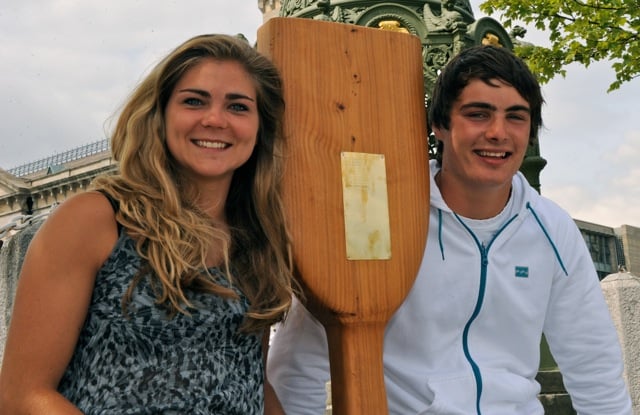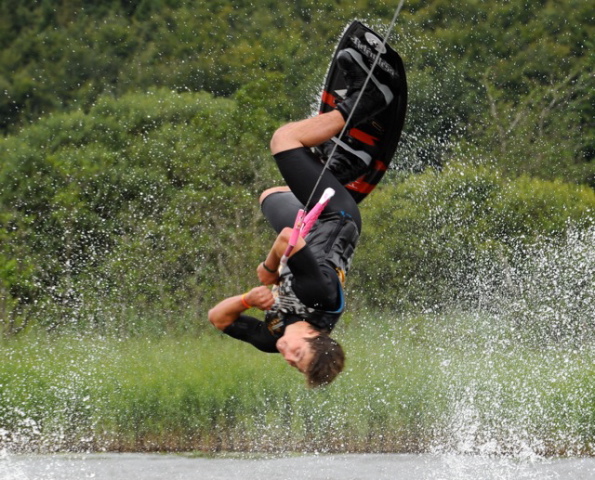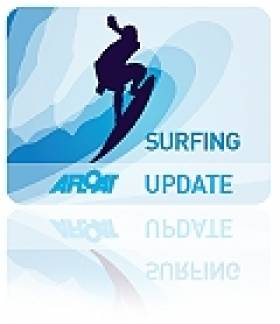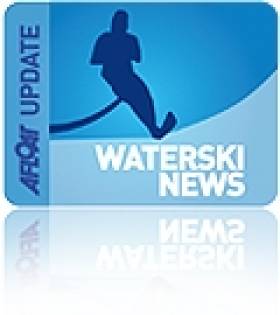Displaying items by tag: Sarawak
20 Countries (including IRL) for Wakeboard World Cup
Founded by a representative of the Sultan of Brunei in 1827, Kuching City is the largest on the exotic island of Borneo. Ireland is in the line up with Sian Hurst and David O'Caoimh. This tropical location, with the support of the Sarawak State Government represented by the Ministry of Tourism and Heritage, Sarawak, will host this 31st World Cup Stop of the International Waterski & Wakeboard Federation (IWWF) and Waterski & Wakeboard World Cup Sdn.Bhd. Initial event details were released at a Press Conference last January in Kuching and all preparations have now been completed.
The IWWF World Cup Series was established to bring the very best Waterski and Wakeboard athletes to important high population centres around the world. To date these have included London, Paris, Alexandria, Moscow, Beijing, Singapore, Doha, Liuzhou, Chuncheon, Putrajaya, and many others. Following this Kuching Wakeboard World Cup Stop, it will move on to Linyi in China.
This Stop will include Wakeboard and the Stars of Florida, a spectacular Show Ski Team from Florida, USA. They will join the Malaysia Day Celebrations in a water parade on the Sarawak River on the night of September 16th which will culminate with riverside fireworks displays.
Not only has this Kuching World Cup Stop been scheduled to coincide with the Malaysia Day celebrations, it will also form part of the birthday celebrations of the Governor TYT Yang Di-Pertua Negeri Sarawak. For the first time it will also be staged in conjunction with the historic 2011 Sarawak Regatta right in the centre of Kuching City. Dating back to 1872, the Regatta attracts an enormous variety of colourful boats including Dragon Boats, Long Boats, etc. During the four days involved, over 100,000 spectators are expected, plus 400 boats 6,000 paddlers - and of course the very best World Cup Wakeboard Riders from 20 countries. The unique combination promises to make this one of the most spectacular World Cup Stops to date.
The special MasterCraft X2 Wakeboard competition boat has already arrived in the Port of Kuching and will play its vital part throughout the World Cup Stop on the Sarawak River.
For those not fortunate enough to be able to attend the 2011 celebrations in Kuching, they will nevertheless be able to enjoy both a FREE STREAM live Webcast from the waterfront and also replays after the event. The time zone is GMT + 8 hours. The Webcast Links are as follows :
LIVE :
http://247.tv/waterski/freestream/2011-sarawak-wakeboard-world-cup/
LIVE REPLAYS :
http://247.tv/waterski/2011-sarawak-wakeboard-world-cup/
Following this Kuching World Cup Stop, the IWWF will distribute an edited TV highlights show to over 500 million viewers and Media Releases to 192 countries. Both Kuching City and this 31st World Cup Stop on September 15/18 will give a great insight to both the special attractions of Sarawak and the extraordinary skills of the World Cup Riders.
The local times of the Wakeboard World Cup programme are as follows :
(GMT+8hrs) :
September 16th - FRIDAY
07.30 - 11.30hrs
Wakeboard - Practice & Semi-Finals
September 17th - SATURDAY
08.00 - 11.30HRS
Wakeboard - Sarawak Youths / Men Quarter Finals / Women LCQ
15.30 - 16.30hrs
Wakeboard - Men LCQ
17.00 - 17.45hrs
Stars of Florida Ski Show
September 18th - SUNDAY
09.00 - 10.00hrs
Wakeboard - Men Semi-Finals
10.00 - 11.00hrs
Wakeboard - Women Finals
11.00 - 11.45hrs
Stars of Florida Ski Show
12.00 - 13.00hrs
Wakeboard - Men Finals
15.000 - 15.45hrs
Stars of Florida Ski Show
16.00 - 17.00hrs
Medals Presentation on sit
Two Irish Riders Achieve Major Wakeboard First
Wakeboard history has just been made by our two most talented Irish Team Wakeboard Riders. Against the very best Wakeboard Riders in the World and also against fierce international competition for these prestigious invitations, the International Waterski & Wakeboard Federation World Cup Selectors have invited Sian Hurst (Belfast) and David O'Caoimh (Dublin) to take part in the World Cup Series for the very first time. Congratulations to Sian and David on this major international recognition.
In the coming days, Sian and David will board their long haul flights from Dublin for Kuching City in Sarawak, Borneo. This will be the 31st World Cup Stop in this very successful Series. To date, it has travelled through London, Moscow, Alexandria, Singapore, Beijing, Doha, Chuncheon, Liuzhou and many other exotic venues, including Enniskillen ! The Series will finish this year in Linyi City in China immediately after the Sarawak Stop.

Sian
Sian and David have shown enormous progress in recent times. Their World Cup selection is very well deserved. They will join the current World Wakeboard Open Champions, Harley Clifford AUS and Raimi Merrit USA and will compete against a star studded line-up of 30 athletes from 20 countries. This will be by far the biggest challenge ever for any Irish Team Rider and they are well prepared for this extraordinary test.

Sian and David
Twenty one year old Sian Hurst recently took the Gold Medal at Chill & Ride Challenge in Germany, the Silver Medal in the World Championships in 2007 and the Bronze Medal at the European Championships in 2008. She has been the Irish National Wakeboard Champions from 2007 to 2011, in spite of a knee injury last year. Seventeen year old David O'Caoimh is the reigning Irish National Wakeboard Champion, and this year alone has taken the Gold Medal at UK Wakestock and a Silver Medal at the World Championships in Italy.

David
The Kuching City World Cup Stop will be a very special experience. It will form an important part of the historical Sarawak Regatta founded in 1872. Over 400 elaborate canoes, dragon boats and long boats will have 6,000 paddlers on board ! There will be a LIVE Webcast and for those who want to share in the thrills and performances of Sian and David, here is the Link to bookmark for Saturday and Sunday, September 17th/18th. Sarawak is GMT +8hrs.
http://247.tv/waterski/freestream/2011-sarawak-wakeboard-world-cup/ <http://247.tv/waterski/freestream/2011-sarawak-wakeboard-world-cup/>
One of the organisers is Irish Waterski & Wakeboard Federation President, Des Burke-Kennedy, and he will be reporting back here throughout the World Cup Series as usual.
After Sarawak, David has also been invited to move on to Linyi City in China for the final World Cup Stop of the year. Sian may yet get an invitation there if anybody falls off that Entry List.
Congratulations to both Sian and David - and good luck in this amazing World Cup experience.

























































